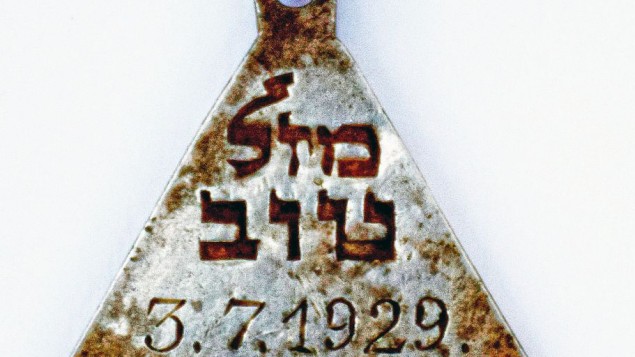
PHOTO: timesofisreal.com
In a statement released Sunday, the Yad Vashem Holocaust memorial museum revealed that archaeologists have uncovered a pendant in an archaeological dig at the site of the Sobibor death camp in what used to be Nazi-occupied Poland. The pendant may be linked to the famous Holocaust writer Anne Frank, who died in another Nazi concentration in Germany in early 1945 when she was just fifteen.
The archaeologists working at the site unearthed several personal items belonging to Holocaust victims who were forced to undress before they were murdered in the death-camp’s gas chambers. The little pendant was found alongside a Star of David necklace, a woman’s watch, and a metal charm with an engraving of Moses giving the Ten Commandments. Researchers think these precious items escaped collection by Nazi soldiers because they slipped between the floorboards of the building into the foundation below.
The dig at the site of the Sobibor death camp was part of a 10-year-long project to reveal the history of the Holocaust and tell the victims’ stories. Archaeologists have so far discovered the train platform, hundreds of personal artifacts from Holocaust victims, and the foundations of the camp’s gas chambers.
What makes the pendant so special? According to the statement released by the Yad Vashem Holocaust memorial museum, the pendant belonged to a teenage girl who was also from Anne Frank’s hometown of Frankfurt, Germany. The piece of jewelry closely resembles a similar pendant that Anne Frank owned herself.
![Anne Frank. [PHOTO: independant.co.uk]](https://historythings.com/wp-content/uploads/2017/01/Anne-Frank-1024x768.jpg)
Anne Frank. [PHOTO: independant.co.uk]
On a hunch, the researchers who uncovered the pendant searched the database of Holocaust victims and found that a Jewish girl named Karoline Cohn was born on July 3, 1929, in Frankfurt, Germany. She was later deported to the Minsk ghetto on November 11, 1941. It’s there that the record of her stops.
Anne Frank was born the same year as Karoline Cohn, and owned a similar pendant.
It’s not exactly clear how Karoline’s pendant ended up in the Nazi death camp at Sobibor. It’s believed to have reached the camp sometime during 1941 and 1943. Researchers aren’t sure if Karoline died in the Minsk ghetto or, if, when the Minsk ghetto was shut down in 1943, she was sent with 2,000 other Jewish prisoners to the death camp. If she was still alive at that time and she still had her pendant, then she must have dropped it between the floorboards of the gas chamber when she was just fourteen years old.
“This pendant demonstrates once again the importance of archaeological research of former Nazi death camp sites. The moving story of Karoline Cohn is symbolic of the shared fate of the Jews murdered in the camp. It is important to tell the story, so that we never forget.”
– Yoram Haimi, Archaeologist the Israeli Antiquities Authority.

